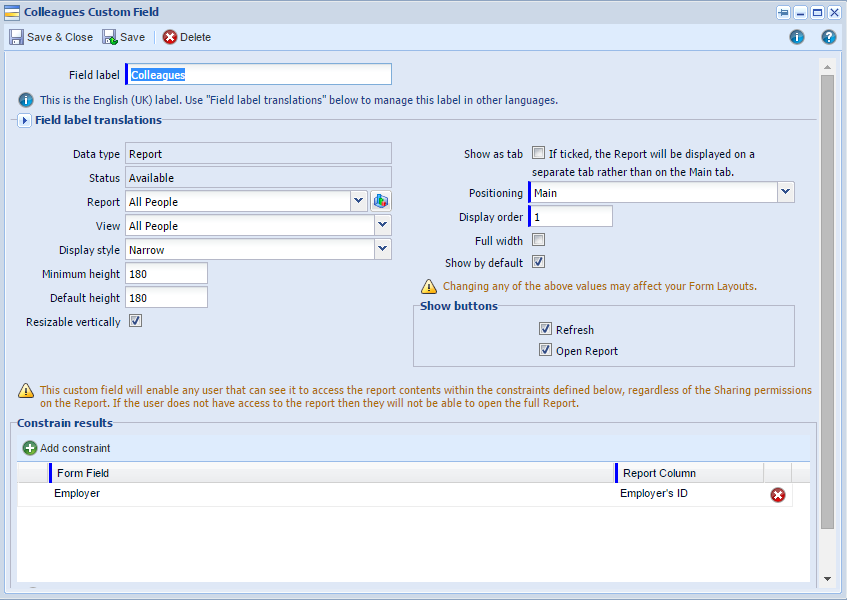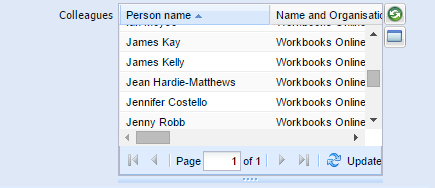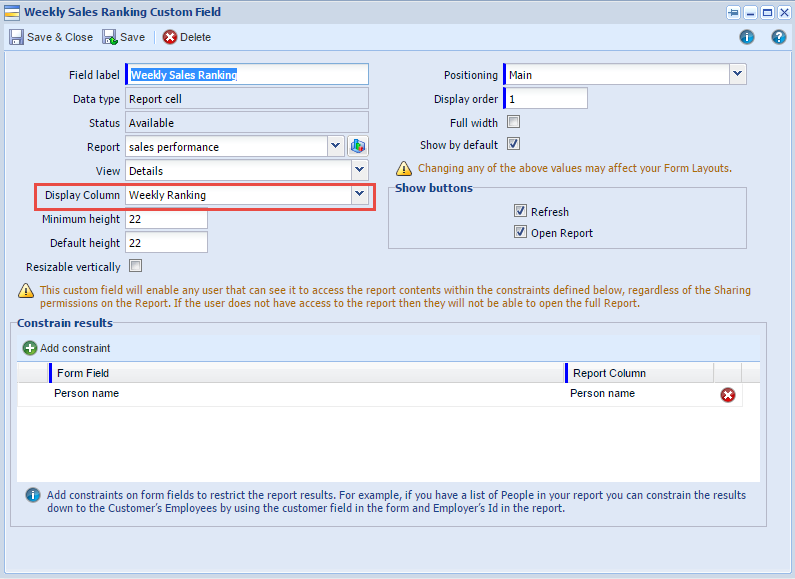Knowledgebase articles
- Welcome to the Knowledge Base
- Introduction
- Training
- Getting Started
- Preferences
- Activities
- Cases
- Importing Data
- Leads
- Marketing
- Introduction to Marketing
- Marketing Campaigns
- Mailing Lists
- Products
- Mailshots
- Upload Library
- Templates
- Event Management
- Compliance Records
- Force24
- Spotler Integration
- What is Spotler?
- Navigating your Spotler homepage
- GatorMail
- GatorLeads / Web Insights
- Tracking Code
- Setting up the Plugin
- Viewing Web Insights Data on your Form Layouts
- Domain Names and Online Activities
- Reporting incorrect Leads created through Web Insights
- Reporting on Web Insights data
- Using UTM Values
- Why aren’t Online Activities being created in the database?
- Why is GatorLeads recording online activities in a foreign language?
- GatorSurvey
- GatorWorkflow
- GatorPopup
- Opportunities
- Projects
- Integrations
- Mapping
- Electronic Signing Tools
- Creditsafe Integration
- Zapier
- Introduction to Zapier
- Available Triggers and Actions
- Linking your Workbooks Account to Zapier
- Setting up Zaps
- Posted Invoices to Xero Invoices
- Xero payments to Workbooks Tasks
- New Case to Google Drive folder
- New Case to Basecamp Project
- New Workbooks Case to JIRA Ticket
- Jira Issue to new Case
- 123FormBuilder Form Entry to Case
- Eventbrite Attendee to Sales Lead and Task
- Facebook Ad Leads to Sales Leads
- Wufoo Form Entry to Sales Lead
- Posted Credit Note to Task
- QuickBooks Online
- Survey Monkey responses to Tasks
- Multistep Zaps
- Email Integrations
- Event & Webinar Integration Tools
- GoToWebinar
- ON24
- Microsoft Office
- Outreach
- Installation
- Outreach Authentication
- Sync People to Outreach Prospects
- Sync Organisations to Outreach Accounts
- Sync Workbooks Opportunities to Outreach
- Sync Tasks/Activities from Workbooks to Outreach
- Sync Outreach Sequences to Workbooks
- Sync Outreach Sequence States to Workbooks
- Sync Outreach Sequence Step Numbers to Workbooks
- Sync Prospects/Accounts/Opportunities from Outreach to Workbooks
- Sync Outreach Tasks/Calls/Meetings to Workbooks
- Scribe/Workbooks Connector
- RingCentral
- Auditing
- Comments
- People & Organisations
- Reporting
- Introduction to Reporting
- Using Reports
- Introduction to Charts
- Exporting Reports
- Advanced Reporting
- Report Snapshots
- Dashboards
- Transaction Documents
- Introduction to Transaction Documents
- Displaying & Adding Transaction Documents
- Copying Transaction Documents
- Transaction Documents Fields Help
- Transaction Documents Line Items Help
- Printing & Sending Transaction Documents
- Managing Transaction Document Currencies
- Managing Transaction Document Statuses
- Setting a Blank Default Currency on Transaction Documents
- Credit Notes
- Customer Orders
- Invoices
- Quotations
- Supplier Orders
- Contract Management
- Sagelink
- Introduction to Transaction Documents
- Configuration
- Introduction to System Administration
- Users & Security
- Database
- Accounting
- Email Integrations
- Customisation
- Creating & Modifying Picklists
- Theme
- Record Types
- Creating Custom Fields
- Report-based Custom Fields
- Linked Fields & Reference Fields
- Record Templates
- Form Layouts
- Customising relationships between parties
- Opportunity Stages
- Custom Records
- Sign In Customisation
- Automation
- Contact Support
- Releases & Roadmap
Displaying reports within Record Views
How to use Custom Fields to display the results from reports on a record directly.
Reporting into Custom Fields
Workbooks allows you to incorporate reports into your custom fields, so that you can dynamically display data in a much broader and more efficient way.
Each time you open or save a record, the data will automatically refresh so that it is displaying the most up-to-date information from the report at the time. You are also able to select to display a Refresh button and/or an Open Report button within the Custom Field configuration View.
There are two ways that you can incorporate reports into your records; firstly as a report caption, and also by returning a specific singular value.
To incorporate a report as a Frame into the record view, select the custom field type Report

In this example, we want to return a report that will show this person as a colleague, so we are using the report of All People
To filter down to the people that are linked to this person via their employer, we need to map the Form Field Employer to the Report Column Employer’s ID. Doing this will ensure that the results returned will all work for the same Employer as the person on the record.
The size of the Frame can be altered by changing the Minimum Height and Default Height values.
The settings above will now configure a Frame, as shown below, to be embedded within the Record View. It can be navigated and used as if it were a normal Report.

You can also create a custom field based on a Report cell, which will return a single result specific to the Record in question, rather than returning a list of results.
After adding a Report cell custom field, you are presented with a similar view to that which is seen with Report Custom Fields

In this example we will use the Report cell to show the rank of our chosen person, amongst the rest of the Sales force. First we need to select the relevant Report (a ranked Sales Performance report in this case) and then narrow it down to the column value that we wish to retrieve.
In order to retrieve the data relevant to the Record we want, we need to add constraints to tell Workbooks which row to look at. For example, if we want to find the row relevant to the Person whose Record we have opened, we will map the Person Name field to the Person Name column. We can now see the relevant value returned in Workbooks.
